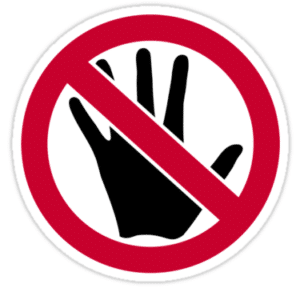Talking to kids about sexual abuse isn’t something any parent wants to have to do, but having simple and honest conversations about boundaries and body safety for kids can help keep the lines of communication open between you and your child.

It can be hard to accept as a parent that while we wish to protect our children from all harm, it isn’t possible to do so. But as parents and caregivers, one of our most important roles is to educate our children about keeping safe, whether it’s about wearing helmets and seatbelts, or about unsafe adults and sexual abuse.
In light of the concern and questions raised due to a recent report of abuse at a local childcare facility, Center City Pediatrics asked local therapist and facilitator of our New Parent + Postpartum Support Group, Perri Shaw Borish, MSS, LCSW, BCD, how parents can address body safety with children. Read on for her thoughts on how to approach this challenging subject. (Originally shared on Wee Wander on August 8, 2017.)
Thinking about how to communicate to our children about safety and boundaries and their bodies can feel really scary and overwhelming as a parent. But I’ve found that approaching it simply and honestly and at a developmentally appropriate level for the age of one’s child is the best way to go. Avoiding it entirely or being vague can lead to more confusion and misunderstanding, and it can send the message to your child that you’re not comfortable talking about this stuff with them — and you want them to be able to talk with you about anything.
So how do we do go about starting this conversation? You might consider talking about how there are good kinds of touch and not-good kinds. You know: The good touch is a hug from your mom. The not-good kind is a touch from a stranger or even someone you know who makes you feel uncomfortable or afraid. Be clear with children about boundaries and body safety — it is just as important to tell children not to touch others as it is to tell them not to let people touch them.
You can emphasize that our bodies are our own, and that they are private. No one has the right to touch us in a way that makes us uncomfortable or scares us. Even if that person is someone in our family or someone we know very well, he or she still doesn’t have the right to touch us in our private parts.
Furthermore, you can say that if someone does try to touch them in a way that doesn’t feel right, they should say No or Stop and then tell mom, dad or another adult they trust right away. Emphasize to your child that no matter what that person may say to them, they must tell a trusted adult as soon as possible. Even if somebody tells them to keep it a secret — DON’T. And they should also know that if something does happen, if someone does touch them or try to touch them, it’s not their fault, they won’t be in trouble, and they are not to blame if an adult doesn’t respect private areas.
There are also a few books I like for young kids on this subject: There’s I Said No: A Kid-to-Kid Guide to Keeping Private Parts Private by Kimberly Kind, Zach King, as well as Your Body Belongs to You by Cornelia Spelman.
Finally, if you have questions or are looking for more information, here are a few easy-to-access resources for parents — and these places are also good spots to find referrals for other experts in the city:
The Joseph J. Peters Institute
The Philadelphia Children’s Alliance
The City’s Office of the District Attorney
More Resources on Body Safety for Kids
For more specific safety tips in child-friendly format, we recommend checking out this helpful infographic, “10 Safe Smart Rules for Kids & Grown Ups.”
Wondering if your child’s sexual behaviors are normal? This article from the American Academy of Pediatrics’ HealthyChildren.Org< discusses sexual behaviors in children 2 to 6 years of age, ranging from normal to “red flag” behaviors, and also includes additional body safety teaching tips for parents.
Note: The information contained in this article has been provided as general health information and does not constitute specific medical advice for your child.
 33 Rock Hill Rd
33 Rock Hill Rd 1740 South Street
1740 South Street 2365 East York Street
2365 East York Street